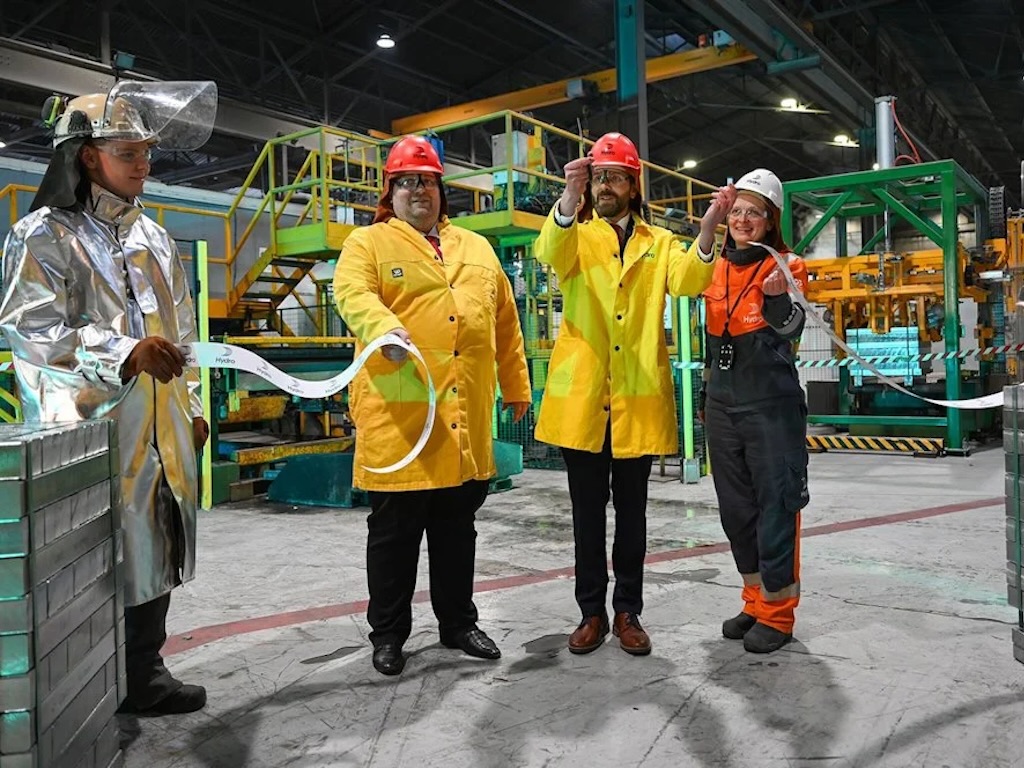April 2024 | Hydro Årdal opens new recycling unit with capacity to process 25,000 tonnes of post-consumer aluminium scrap annually.
Hydro has invested NOK 100 million in recycling technology in the casthouse at the Årdal primary aluminium plant in Norway.
“The demand for low-carbon aluminium is increasing, particularly in the automotive industry. Thanks to the cutting edge technology and know how utilized by our team in Årdal, customers can reduce the carbon footprint in their value chain and get closer to achieving their climate targets,” says Eivind Kallevik, Executive Vice President of Hydro Aluminium Metal.
The upgraded casting line in Årdal will mix primary aluminium made with renewable hydropower with up to 30 percent post-consumer aluminium scrap. This is resulting in a record low-carbon footprint that helps some of the most advanced customers in Europe cut the embedded greenhouse gas emissions of their products.
The recycling unit in Årdal had its official opening on April 10. Hydro Årdal is now able to deliver REDUXA 3.0 aluminium with a carbon footprint of below 3.0 kg CO2e/kg aluminium. This is approximately 80 percent lower than the world average.
“Low-carbon aluminium from Årdal is already an important part of Hydro’s strategic partnership with leading customers in our joint efforts to decarbonize. With this upgrade and other long-term investments at the plant, Hydro Årdal is set to deliver low-carbon aluminium to the European market for decades to come,” says Kallevik.
Hydro aims to become a net-zero producer of aluminium by 2050, and is on track to achieve a 30 percent reduction in emissions by 2030 compared to 2018 levels. Aluminium recycling is one of the main pathways of Hydro’s decarbonization strategy.
In addition to recycling of post-consumer scrap, Hydro is working towards full decarbonization by introducing new technologies such as carbon capture and storage, as well as developing HalZero, a completely new electrolysis process with the potential to eliminate CO2 emissions from primary aluminium production altogether.
Background
By 2050, Hydro aims to become a climate-neutral company that produces climate-neutral products for a climate-neutral society. By investing in new technology and increasing recycling, the company will achieve its goal of reducing its own greenhouse gas emissions by 10 percent by 2025 and 30 percent by 2030, compared to 2018 levels.
Full decarbonization will be achieved by recycling more used aluminium in combination with the adoption of new technologies. This includes carbon capture and storage, the use of hydrogen and biogas as energy sources, and in addition, new, proprietary technology that has the potential to eliminate greenhouse gas emissions from primary aluminium production.
By combining hydropower as an energy source, modern production technology and recycling of scrap, Hydro Årdal can deliver Hydro REDUXA 3.0 with a carbon footprint of less than 3 kg CO2 per kg aluminum. This is around 80 percent lower than the global average.
